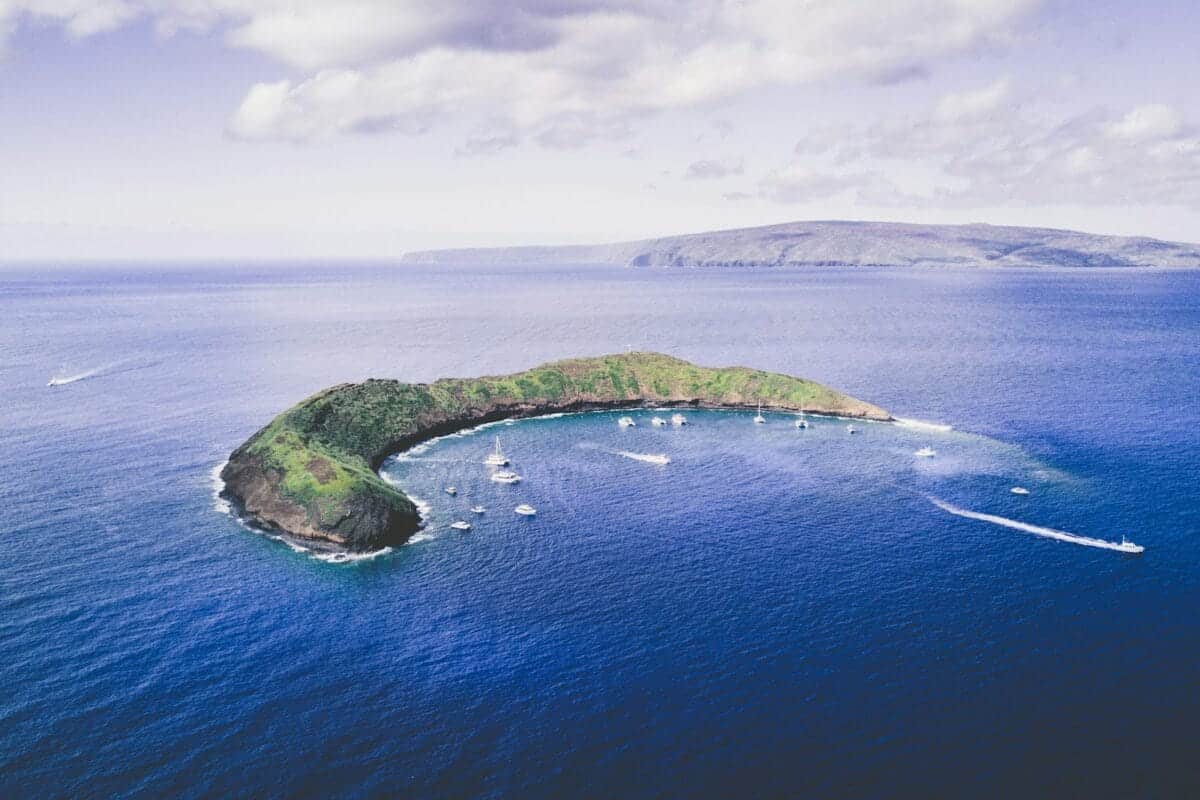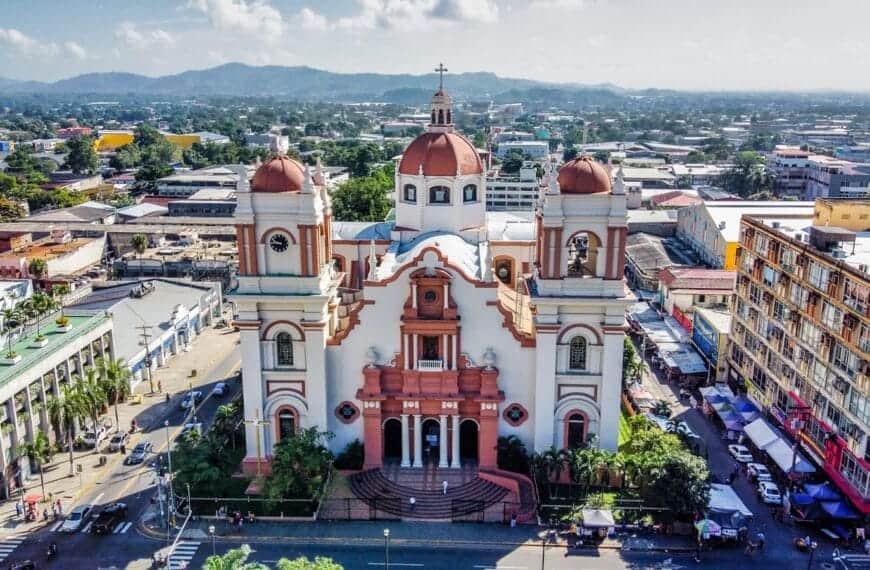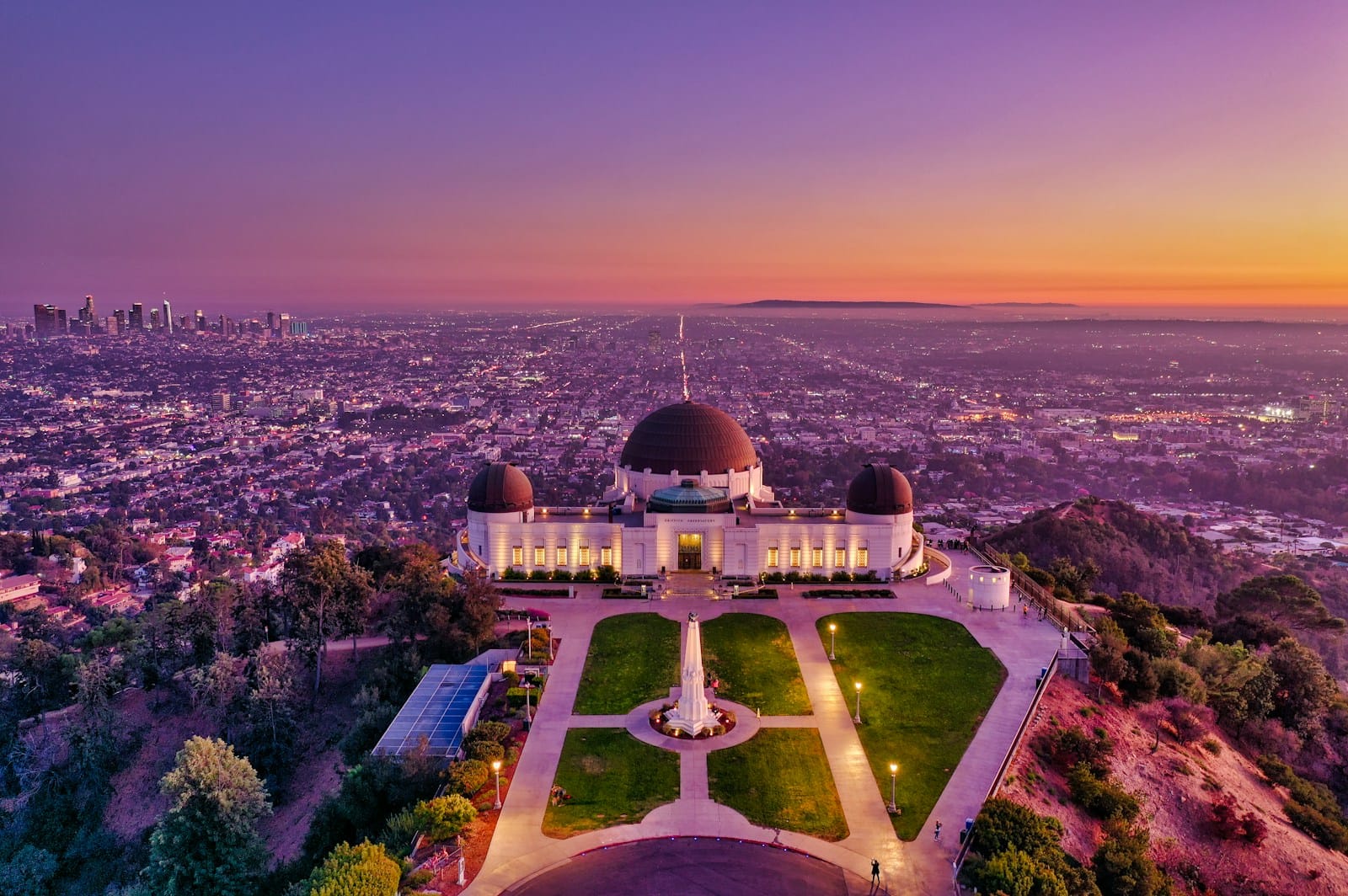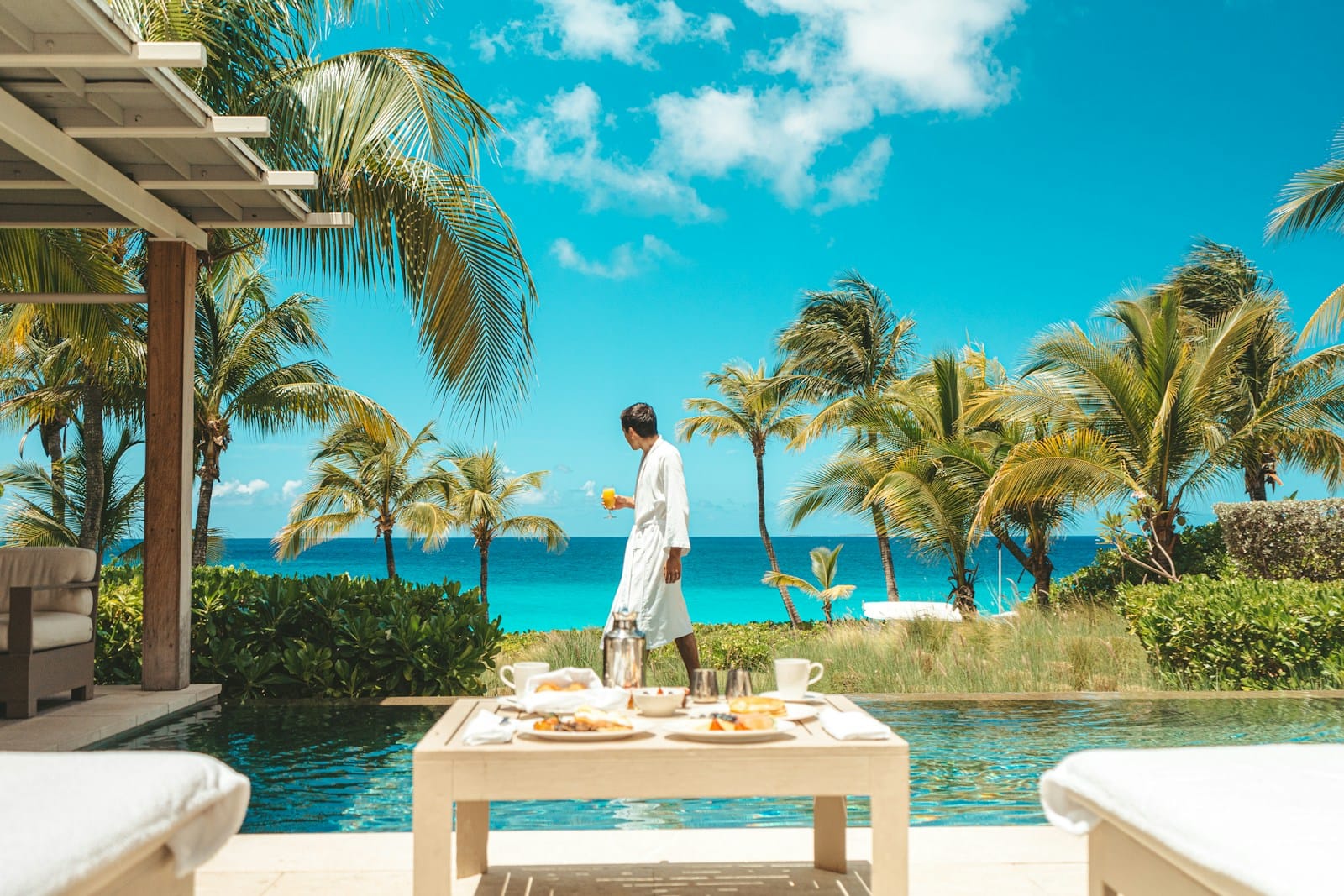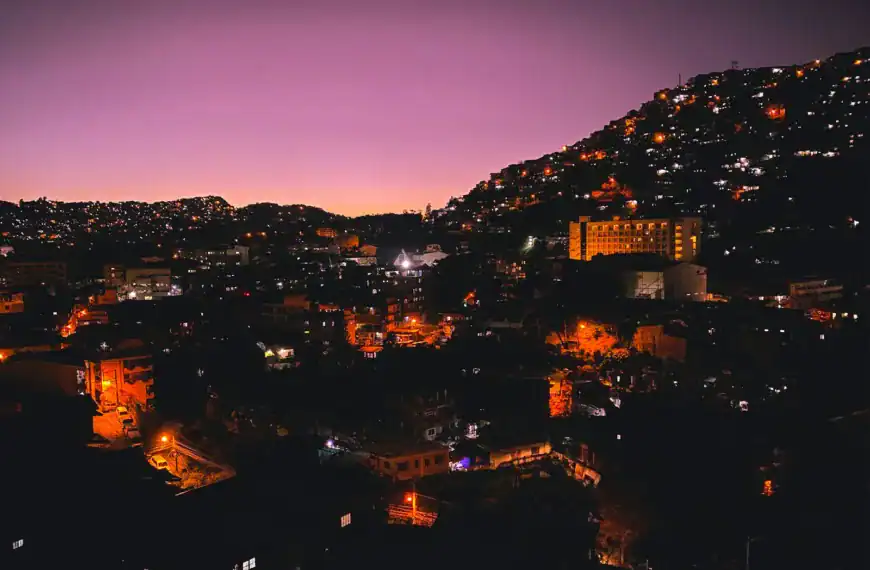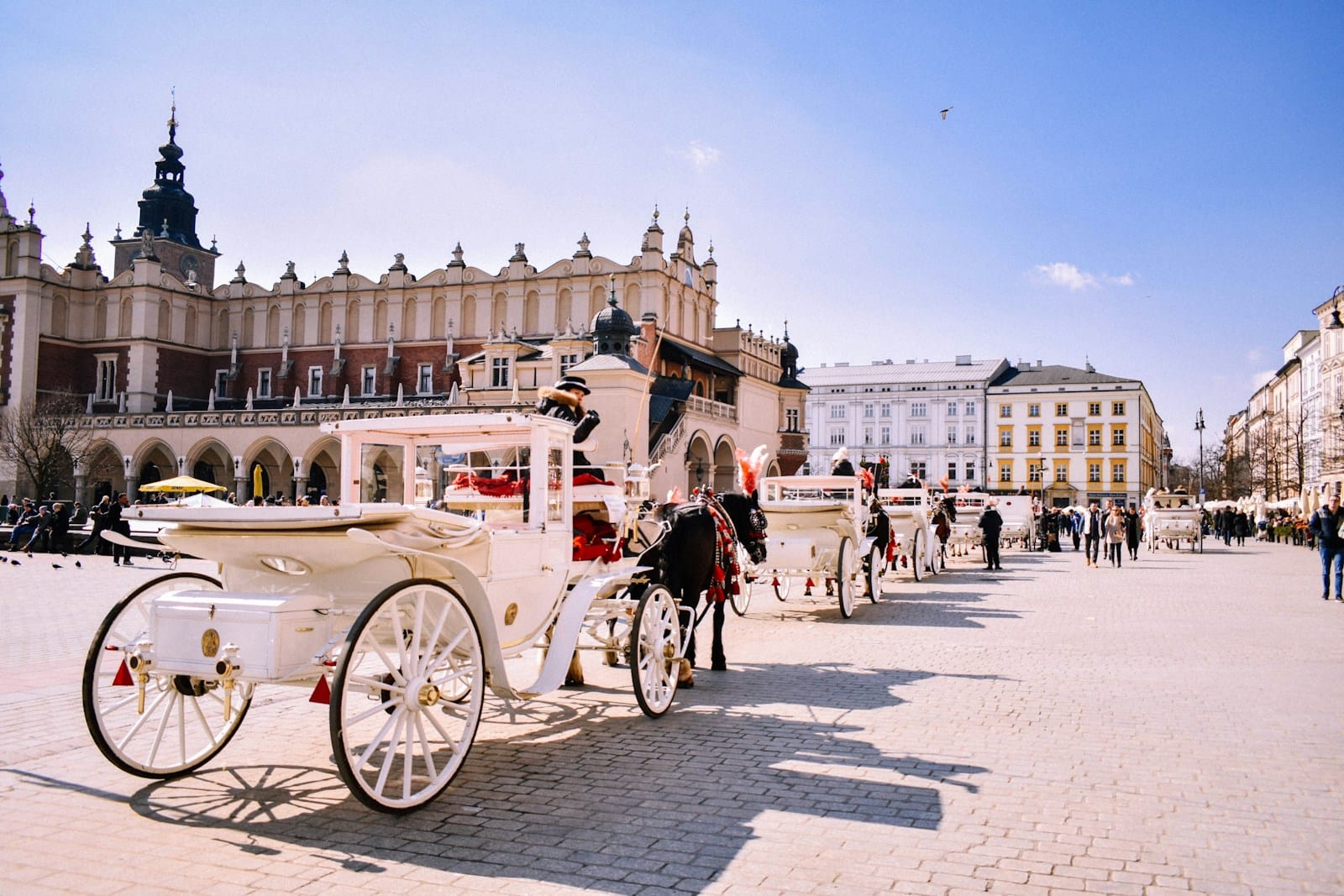Molokini Crater – Snorkeling Paradise of Maui
Intro to Molokini Crater
Rising like a crescent moon from the waters between Maui and Kahoʻolawe, Molokini Crater is a marine sanctuary unlike anywhere else in Hawaii. This half-sunken volcanic caldera draws travelers from around the world for crystal-clear waters, dazzling coral reefs, and unforgettable snorkeling and diving experiences. The island’s unique horseshoe shape shelters vibrant marine life, offering visibility often exceeding 100 feet. Beyond the reef, seabirds wheel overhead, while spinner dolphins sometimes play in the channel. It’s a natural wonder that combines geology, ecology, and culture — one of Maui’s most iconic attractions.
Planning a Molokini adventure? Start with our full Molokini tour guide — covering the island’s beaches, volcanoes, culture, and hidden gems to pair with your crater experience.
Nearby Tours
Haleakalā Sunrise Tours | Lanai Snorkel Charters | Road to Hana Day Trips | Maui Whale Watching Cruises | Turtle Town Kayak Excursions
💡Quick Facts:
Destination: Molokini Crater
Continent: North America
Country: United States
State: Hawaii
Island: Maui
Area: ~0.23 mi² (0.6 km²)
Population: Uninhabited
Known For: Marine sanctuary, crescent-shaped volcanic crater, coral reefs, snorkeling and diving site
🛂Arrival Info:
Entry Requirements: Follows standard U.S. entry rules (ESTA for visa waiver countries, visas as required).
Access Point: Only accessible via licensed boat operators. Independent landings are prohibited.
Departure Harbors: Maʻalaea Harbor (20 minutes from Kahului), Kihei Boat Ramp, and Wailea.
🏥Health Info:
Vaccines: No special vaccines required beyond standard U.S. entry.
Sun Protection: Reef-safe sunscreen is mandatory under Hawaii law.
Sea Conditions: Seasickness is common on boat trips; medication is recommended for sensitive travelers.
Nearest Hospital: Maui Memorial Medical Center in Kahului provides emergency and general medical care.
🚑 Check travel insurance options for travel emergencies, delays, and medical needs abroad — Get coverage here
💉 Stay Informed with Official Updates: WHO – International Travel & Health | CDC – Travel health updates
🚨Travel Advisory:
Safety Level: Hawaii is generally safe under U.S. State Department guidance.
Access Restrictions: Entry is only allowed with licensed tour operators; unauthorized visits are prohibited.
Marine Risks: Strong currents and sharp coral are present—swimming or diving should always be supervised.
Tour Operator Rules: Passengers must follow guide instructions to ensure safety and reef protection.
🌍Track Real-Time Official Updates: US Travel Advisory | UK Foreign Travel Advice | Government of Canada | NZ SafeTravel
🥳Holidays:
New Year’s Day: January 1
Prince Kūhiō Day: March 26
King Kamehameha Day: June 11
Independence Day: July 4
Thanksgiving: Fourth Thursday in November
Christmas Day: December 25
💰Visitor Info:
Currency: U.S. Dollar (USD)
Payment Methods: Credit cards accepted throughout Maui; cash useful for tipping.
Average Costs: Snorkel tours $120–$160; scuba diving trips $180+ per person.
Tipping Customs: 15–20% gratuity customary for boat crew and guides.
Taxes and Fees: Hawaii excise tax and harbor fees typically included in advertised ticket prices.
🛫Airports:
Kahului Airport (OGG): Primary airport on Maui with mainland U.S. and inter-island flights.
Kapalua Airport (JHM): Commuter airport for flights from O‘ahu and nearby islands.
Hana Airport (HNM): Small regional airport with limited inter-island service.
🧳 Delayed or canceled flight? Check if you’re eligible for compensation
🚍Transport:
Road Access: None; Molokini is offshore and only reachable by boat.
Tour Departures: Maʻalaea Harbor, Kihei Boat Ramp, Wailea area.
Public Transport: No direct public transit to harbors; rental cars, hotel shuttles, or taxis required.
Private Options: Custom private charters are available for groups and special itineraries.
🚗 Book reliable airport transfers and in-city rides in advance. Reserve your ride here
🛰️Connectivity:
Mobile Coverage: Weak or nonexistent at Molokini Crater.
Wi-Fi Availability: No Wi-Fi offshore; available again upon return to Maui’s coast.
Local Carriers: AT&T, Verizon, and T-Mobile provide the strongest Maui coverage.
eSIM Options: Widely available for visitors upon arrival in Hawaii.
🛜 Stay connected abroad with affordable eSIM data packs. Get your eSIM here
📜Laws & Etiquette:
Marine Protection: Removal or touching of coral, shells, or wildlife is illegal.
Sunscreen Laws: Only reef-safe sunscreen products are permitted.
Alcohol & Smoking: Prohibited on most tour boats and within the marine preserve.
Visitor Conduct: Travelers must follow crew and guide instructions to minimize reef damage and ensure safety.
👮Emergency Info:
Emergency Number: 911
U.S. Coast Guard (Hawaii District): +1 808-842-2600
Maui Police Department: +1 808-244-6400
Nearest Consulates: Most international consulates are located in Honolulu on the island of O‘ahu.
🏛️ Use embassy locator tools: Embassies Worldwide
🌞Weather:
Climate: Tropical with warm temperatures year-round.
Best Season: April to October offers the calmest seas and clearest visibility (up to 150 ft / 45 m).
Winter Conditions: November to March brings cooler waters and higher swells; tours may be canceled due to safety.
Average Temperatures: 70–85°F (21–29°C) throughout the year.
Marine Visibility: Among the highest in Hawaii, often exceeding 100–150 ft (30–45 m).
🌦️ Stay prepared—check the weather forecast for your destination — Weather Forecast
Why Visit Molokini Crater?
Molokini is more than just another snorkeling spot. As a designated Marine Life Conservation District and bird sanctuary, it protects a fragile ecosystem where over 250 fish species thrive. For snorkelers, the shallow inner reef provides calm waters filled with parrotfish, yellow tangs, and butterflyfish. Scuba divers find adventure on the crater’s outer walls, where drop-offs descend hundreds of feet into the deep Pacific. Birdwatchers marvel at wedge-tailed shearwaters nesting on the islet’s rocky cliffs. Adding to its allure, Molokini’s offshore setting ensures pristine waters free of sediment — a photographer’s dream. For families, couples, and adventurers, it’s the rare attraction that delivers both serenity and thrill.
Iconic Landmarks and Historic Sites
- Molokini’s Crescent Shape – The defining feature of the crater, its curved rim creates a natural barrier against currents. Visitors see the exposed side above water while the rest of the volcanic cone hides beneath the ocean’s surface.
- Reef Gardens – Beneath the turquoise water, coral formations flourish with finger coral, cauliflower coral, and antler coral. Each supports a bustling underwater neighborhood of reef dwellers.
- Historic Significance – Hawaiian legends connect Molokini to Pele, the fire goddess, who split the crater in a tale of love and jealousy. During World War II, the islet served as a bombing range — remnants of that history remain, though today it is strictly protected.
- Seabird Sanctuary – Though tours rarely land on the crater, the above-water portion is critical nesting ground for seabirds. Spotting their flight patterns is a bonus for those with binoculars.
Museums, Galleries & Cultural Spaces
While Molokini itself is uninhabited, Maui provides cultural context that enriches a visit.
- Maui Ocean Center – Located in Maʻalaea Harbor, this aquarium showcases marine life found at Molokini. Exhibits on coral reef ecology and Hawaiian cultural connections deepen appreciation before or after a tour.
- Whalers Village Museum – In Kāʻanapali, this museum explores Hawaii’s whaling history, contrasting sharply with today’s conservation focus. Visitors gain perspective on how Maui’s relationship with the ocean has evolved.
- Bailey House Museum – In Wailuku, this museum offers artifacts, ancient Hawaiian tools, and cultural insights that connect volcanic formations like Molokini to broader island history.
Natural Attractions & Scenic Spots
- Turtle Town – Near Makena Landing, this reef system is famous for Hawaiian green sea turtles. Many Molokini boat tours stop here after snorkeling at the crater.
- La Perouse Bay – At the end of Maui’s southern road, this rugged volcanic shoreline is alive with spinner dolphins and lava landscapes.
- Makena State Park – Known for Big Beach and Little Beach, it’s one of Maui’s most scenic stretches of sand, often included in day trips around Molokini tours.
- Keawakapu Beach – A favorite for shore snorkeling, where calm waters and reef fish provide an accessible alternative to Molokini.
- Kahoʻolawe Views – From boats heading toward the crater, travelers enjoy rare glimpses of this sacred island, once used by the military but now under restoration by Hawaiian cultural organizations.
Editor’s Picks
- Morning Snorkel Sail – The calmest seas and brightest visibility make early tours the gold standard. Catamarans serve breakfast en route, with reef stops perfectly timed for marine life activity.
- Introductory Scuba at Molokini – Beginners can try diving in the safety of the crater’s inner walls with instructors, while certified divers explore the dramatic drop-offs outside.
- Whale Season Sightings – From December to April, humpback whales migrate through Maui’s waters. Some Molokini tours double as whale-watching excursions.
- Private Charter to Molokini – For groups or couples, hiring a private boat offers flexibility, fewer crowds, and personalized guidance.
- Stargazing Sail Returns – Some sunset charters extend into night, letting passengers witness constellations free of light pollution on the return to harbor.
Book immersive Molokini Crater tours and experience unforgettable things to do in Maui — from snorkeling crystal-clear reefs and diving dramatic walls to whale watching, sailing adventures, and sea turtle encounters.
Unique & Unexpected Places
- Back Wall of Molokini – Accessible only to advanced divers, this sheer underwater cliff plunges 300 feet. Large pelagic fish, manta rays, and reef sharks frequent the area.
- Enigmatic Legends – Hawaiian mythology casts Molokini as a woman transformed into stone by Pele. Local guides often share variations of the tale, bringing a spiritual dimension to the crater’s visit.
- Sunken Military Relics – While not highlighted on tours, divers occasionally glimpse remnants of WWII ordnance resting on the seabed — silent reminders of a different era.
How to Plan Your Visits
Tours to Molokini Crater depart from Maʻalaea Harbor or Kihei Boat Ramp, with travel time averaging 30–45 minutes by boat. Morning departures are recommended for calmer seas and best visibility. Most tours last 4–6 hours and include snorkeling gear, flotation devices, and meals. Booking in advance is essential, especially during peak seasons, as group sizes are regulated to protect the reef. Eco-certified operators prioritize reef safety and often provide educational talks. Accessibility varies — inquire about ladder types and gear for less mobile travelers.
When to Visit
Weather plays a key role in Molokini trips. Summer (May–September) offers calmer seas, longer days, and vibrant reef colors. Winter (December–April) brings humpback whales, though ocean swells may occasionally cancel trips. Shoulder months (October–November, April–May) balance fewer crowds with good snorkeling conditions. Morning tours are strongly preferred: trade winds increase by midday, sometimes making the ride choppy. Avoiding major holidays ensures more space onboard and a quieter reef experience.
Must-See Nearby Adventures
- Road to Hana – A lush coastal drive through waterfalls, black sand beaches, and tropical rainforest.
- Haleakalā National Park – Sunrise at the summit is legendary, and hiking trails explore volcanic landscapes.
- ʻIao Valley State Monument – Iconic needle-shaped peak rising from verdant valleys.
- Lanai Day Trips – Ferries or charters whisk visitors to Lanai’s beaches and shipwreck sites.
Savor the Local Cuisine
- Fresh Poke Bowls – Sold at harbor shops near Maʻalaea, ideal pre- or post-tour.
- Huli Huli Chicken – A local barbecue specialty served at roadside stands, smoky and tangy.
- Farm-to-Table Dining – Maui’s fertile upcountry supports restaurants pairing island produce with ocean catches.
- Shave Ice – A colorful treat to cool off after hours in the sun.
Travel Tips
- Bring reef-safe sunscreen; regular sunscreen damages coral.
- Seasickness remedies help on choppier days.
- Pack a waterproof camera or GoPro to capture underwater scenes.
- Wear a rash guard for sun protection.
- Hydrate well; the sun and salt are dehydrating.
- Book tours early in your trip to allow rescheduling if weather cancels.
Sample Day Plans
Half-Day Snorkel Adventure
Depart Maʻalaea at dawn, snorkel Molokini, then visit Turtle Town. Return mid-day for lunch in Kihei.
Full-Day Ocean & Volcano Combo
Morning snorkeling at Molokini, afternoon drive up Haleakalā for sunset.
Luxury Couples Escape
Private catamaran to Molokini with catered lunch, followed by sunset cocktails on Wailea Beach.
Local Secrets
Repeat visitors often opt for twilight or less crowded mid-week tours. Some local operators experiment with reef monitoring programs where guests assist marine biologists. Longtime Maui residents also recommend pairing a Molokini trip with cultural stops in upcountry Maui for a deeper connection to the island.
Ideal Seasons
Summer is best for smooth waters and bright reef viewing, while winter adds the magic of humpback whales. Spring and fall offer balance with fewer visitors. Each season has trade-offs, but morning remains the constant key for calm seas.
Moving Around
Flights into Kahului Airport (OGG) connect Maui to the mainland U.S. and other islands. From there, rental cars are the most practical option, though rideshares and shuttles reach Maʻalaea and Kihei harbors. Parking fills early, so arrive ahead of departure time. Maui’s roads are straightforward, but always allow buffer time for traffic.
Stay Close to the Action
- Kihei – Affordable condos, walkable beaches, and easy harbor access.
- Wailea – Luxury resorts with spas, golf, and fine dining — ideal for couples pairing Molokini with romance.
- Maʻalaea – Central harbor location, small inns, and family-friendly convenience.
What to Know Before You Reserve
- Book early for morning departures.
- Pack reef-safe sunscreen and light cover-ups.
- Ask about accessibility if mobility is a concern.
- Group sizes vary; smaller tours offer intimacy, larger boats provide stability.
- Cancellation policies are strict in peak season — review carefully.
- Check if meals and drinks are included.
- Winter seas are cooler; wetsuits may help.
- Respect marine guidelines — never touch coral or wildlife.
- Bring ID and payment methods for gear rentals or bar services.
- Support eco-certified operators whenever possible.
Accessibility & Special Considerations
Some boats are more accessible than others. Families with children benefit from tours offering flotation aids and shaded decks. Travelers with limited mobility should confirm ladder or ramp setups before booking. Hearing-impaired guests can request written safety briefings. Scuba divers with medical conditions must present clearance forms.
Where to Go Next
Pair Molokini with broader Maui exploration or continue island-hopping:
- Oahu Travel Guide – Waikiki beaches, Pearl Harbor history, and surf culture.
- Big Island Travel Guide – Volcanoes National Park and manta ray night dives.
- Kauai Travel Guide – Na Pali Coast hikes and waterfalls.
- Lanai Travel Guide – Quiet island charm with luxury escapes.
Final Call to Action
Molokini Crater is one of those rare destinations where nature’s beauty remains unspoiled yet accessible. With careful planning and respect for its fragile environment, every visit rewards travelers with memories beneath the Pacific’s sparkling surface. Ready to explore? Begin your journey with Skaiya Travel Guide and discover the deeper stories behind Hawaii’s most breathtaking attractions.
Maui Travel Guide | Hawaii Travel Guide | Hawaii Island Tours
Ready to witness one of Hawaii’s greatest natural attractions? Discover the magic of Molokini Crater — and book your unforgettable tour of Maui’s underwater volcano today.

